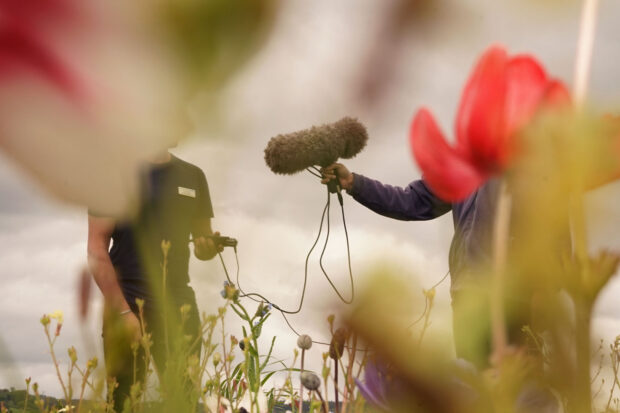 Across government departments, there are digital teams working on the transformation of services for the public, as well as for the staff that work within them.
Across government departments, there are digital teams working on the transformation of services for the public, as well as for the staff that work within them.
Our 27th cross-government design meetup brought together designers from the Home Office, the Department for Work and Pensions (DWP), Ministry of Justice (MOJ) and HM Revenue and Customs, among others.
The focus was on the demands and challenges of how we design products and services for people who are at both vulnerable and critical stages of their lives.
In the present political, economic and social climate, this is a very real challenge and we wanted to organise an opportunity for those working across the public sector to share their experiences and hear from their colleagues.
We wanted to hear about the motivation and commitment designers have for working in government on the toughest challenges and supporting the people who are in most need of the help government services should provide.
Inspiring us to become better
Designers are often good at talking about their work in their own departments and giving it the structure and focus it requires, but we’re not always talking about this work across government.
There are many inspiring examples that can help us all become better, more empathic designers, prioritising the right kind of design.
Often this work is highly sensitive and difficult. The people we are designing for may well be at risk of harm and facing crisis points in their lives.
Departments responsible for policies that are related to vulnerable people can become desensitised and this can ultimately have an impact on these vulnerable people. We as designers and digital teams have a responsibility to retain our empathy, patience and understanding.
There were 4 talks at the meetup. Three from government departments and a fourth from Matt Smith, a music technician working at the NHS Langdon Hospital in Devon.
All of the talks were delivered in a safe space for sharing and listening, which provided an environment to learn from others and understand their experiences.
Shared challenges
The 3 government talks were from Jacinta Mellenger at DWP, who talked about the challenges the department faces in designing for multiple and complex needs across a range of public facing services.
Julianne Bowman and Jake Hawkins from the Police Digital Service at the Home Office spoke about the challenging subject of online child sexual exploitation and how the department supports police investigators who have to work with such material.
Gavin Wye and Sam Groves from the MOJ also talked about the design challenges of meeting the needs of vulnerable victims of sexual violence for the Criminal Injuries Compensation Authority.
The talks from the government departments shared similar themes. These included the challenge for those working directly with vulnerable people to avoid falling victim to empathy fatigue and to find ways to research and test products and services without relying directly on the same vulnerable people.
The requirement for user centred design teams within business areas to recognise they cannot just use common research/design practices, but instead need to adapt, listen, empathise and be flexible, was also highlighted. You cannot always just test a thing or talk with the vulnerable person it is for.
Overall, the common challenge across teams is to develop and share a common view of users as people and not statistics - and to ensure this view is also held by those holding the policy and those responsible for delivery.
Working sensitively
Matt Smith from the NHS spoke about his innovative and fascinating work using music and sound as a very real complement to the challenges cross-government designers face.

He described how he works with vulnerable people in the hospital grounds as well as in a studio on the premises. There was an opportunity to learn from his hands-on experience and to build further empathy, patience and humility into the way we work.
The talk helped us explore how individuals and teams can take different approaches to working on distressing and emotionally complex problems, and build confidence and rapport by building stronger and more empathic relationships with the people whose lives they are endeavouring to support and improve.
Matt described some of the people he works with and how their lives have greatly improved by having the freedom to work with sound and music in many different ways and formats. This has helped avoid prescriptive or standard methodologies and helped give time and space to develop skills and a sense of ownership.
Everyone who attended the day was left with much to reflect on and the opportunity to become better user-centred designers and learn how to work with people in crisis respectfully, with sensitivity and prioritise improving their lives.
Find out more information about cross-government design meetups.
Subscribe to this blog for updates. You can also subscribe to the MOJ Digital and Technology blog.

1 comment
Comment by David Lowe posted on
Thanks for the summary Matthew. Always interesting to hear what gov is doing in this area.